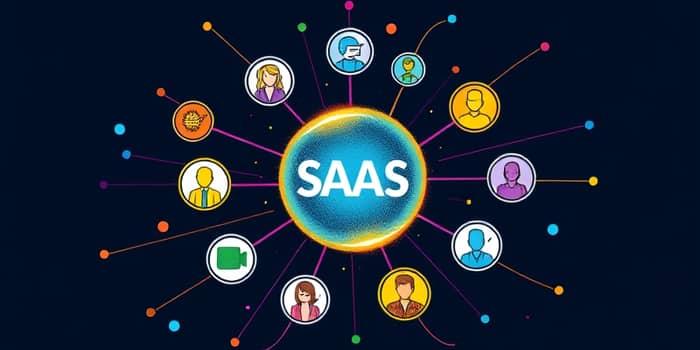
In today’s dynamic technology landscape, understanding and managing customer concentration is critical. Tech companies, especially those in SaaS and platform services, often rely heavily on a handful of major clients to drive revenue and growth. While landing large enterprise accounts can accelerate scaling, it also introduces significant proportion of its revenue exposure to a few customers. This article explores how to define, measure, and mitigate customer concentration risk in tech assets, drawing on practical metrics, investor perspectives, and sector-specific considerations.
Customer concentration risk refers to the potential threat a company faces when a large percentage of its revenue originates from a single customer or a small group of customers. In the technology sector—where multi-million-dollar contracts coexist with innovative, high-growth models—this risk can be amplified. For SaaS firms, hitting a few "lighthouse" clients validates product-market fit but can create overreliance on those accounts.
When one customer accounts for more than 15–20% of total revenue, or the top five customers collectively contribute over 25%, concentration risk is considered substantial. Companies must recognize when these thresholds are approached and take proactive measures.
Accurate measurement is the foundation of effective risk management. Key metrics include:
Consider a SaaS company with $200 million in annual recurring revenue (ARR):
By tracking these figures over time, executives can identify trends and anticipate potential revenue gaps before they materialize.
Relying on a narrow customer base introduces several pitfalls:
Accounts receivable often represent around 40% of assets for many tech firms and remain uninsured, further intensifying exposure when a major customer defaults. Studies show that 82% of business failures stem from cash flow challenges, frequently linked to concentration risks.
Investors view high customer concentration as a red flag. During due diligence, venture capitalists, private equity firms, and potential acquirers will scrutinize revenue distribution, contract lengths, and customer diversification trends. They often require evidence of contingency plans in case of client loss before committing capital.
Common thresholds flagged by investors include:
In technology assets—such as platforms, IT services, and SaaS—the dynamics of customer concentration differ from other industries. Many tech providers rely on a few large enterprise accounts for early traction, which can mask underlying vulnerabilities. While network effects and data lock-in may retain clients longer, sudden strategic shifts or budget cuts at these enterprises can trigger rapid revenue declines.
Furthermore, platform companies hosting third-party developers face their own variant of concentration risk if a handful of partners drive most user engagement or transaction volume.
Effective mitigation involves a multi-pronged approach:
Long-term contracts lock in predictable cash flows, while targeted expansion into adjacent industries and geographies broadens the customer base. Operational excellence—such as lean management and automated billing processes—also strengthens resilience.
Risk assessment should be continuous rather than a one-time exercise. Executives should deploy detailed risk monitoring dashboards that track revenue share by client, contract renewal schedules, and creditworthiness indicators. Integrating these analytics into a comprehensive governance, risk, and compliance platform enables real-time alerts when concentration thresholds are breached.
Regular cross-functional reviews—combining finance, sales, legal, and risk teams—ensure that mitigation tactics evolve alongside market conditions and customer portfolios.
Company Alpha, a mid-sized SaaS provider, derived 30% of its ARR from a single healthcare client. When that client delayed payments during a regulatory shift, Alpha’s cash reserves were strained, forcing emergency funding with unfavorable terms. In contrast, Company Beta proactively capped any single customer’s share at 15% by diversifying its sales pipeline into education, manufacturing, and government sectors. Beta also implemented contingency plans in case of client loss, maintaining a healthy cash buffer and renegotiating shorter billing cycles.
Mapping and managing customer concentration risks are essential for sustaining growth and preserving enterprise value in technology companies. By defining risk thresholds, measuring exposure, and applying targeted mitigation strategies, firms can navigate the uncertainties of large-client dependencies. Embracing continuous risk monitoring and cross-functional governance ensures that no single customer can derail long-term success. Ultimately, a balanced client portfolio not only stabilizes cash flow but also boosts investor confidence, paving the way for sustainable innovation and expansion.
References













